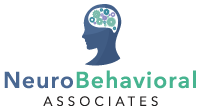October is an observance month for both Down syndrome and dyslexia. It’s time to celebrate adults and children with these conditions, as well as spread awareness and foster understanding of the experiences of these individuals.
Down Syndrome
Down syndrome is a genetic condition that occurs as a result of a full or partial copy of chromosome 21. Down syndrome is more common than you might think,; occurring in one of every 700 births in the United States.1 There is an increased incidence as the age of the mother increases.
The duplicate chromosome results in unique traits in an individual. Babies with Down syndrome often have physical differences, such as decreased muscle tone, a flattened facial shape, an upward slant to their eyes, or a deep crease across the palm of their hand. Individuals with Down syndrome may also experience some degree of cognitive impairment. The most important thing to remember is that Down syndrome affects each person differently. Children with Down syndrome may attend school classes alongside peers without Down syndrome, as well as special education classes. Many high school graduates with Down syndrome go on to attend and complete college programs. Adults with Down syndrome join the workforce in a variety of careers, as well as partake in hobbies and relationships.
Down syndrome does increase a person’s risk of certain medical problems, particularly heart defects. When Down syndrome was first diagnosed, the average life expectancy was just 25 years. Today, with improved medical care and awareness, people with Down syndrome are living into their 60s and beyond.
Individuals with Down syndrome are perfectly capable of providing meaningful contributions to their families, communities, schools, and workplaces.
Dyslexia
Dyslexia is a common learning disability that affects an individual’s oral and written language skills. While it is commonly believed that those with dyslexia reverse letters as they read or write, dyslexia is not actually a visual condition. Instead, people with dyslexia experience great difficulty identifying speech sounds and connecting those sounds to words.
As is the case with Down syndrome, dyslexia is a highly individual condition with varying levels of severity. Children with dyslexia can and do learn to read, but may require specific interventions in phonics, as well as accommodations in school. Early diagnosis of dyslexia is crucial, as those with dyslexia who are identified in the first few grades of elementary school have less difficulty with reading in adulthood.2
As a result of the frustrations of dyslexia, a person with dyslexia may experience struggles with self-confidence and anxiety. Individuals with dyslexia usually have normal to above-average intelligence. They are often creative, fast thinkers who go on to become successful adults. The sooner a child with dyslexia can be identified, the sooner they can receive phonics instruction, and regain their confidence.
Making the Most of Awareness Month
Fundraisers, walks, and events are held for both Down syndrome and dyslexia throughout the month of October.³ This is an ideal time to share your stories of these conditions, and educate your friends and family. If you have questions or concerns regarding your or a loved one’s experience of dyslexia or Down syndrome, a neurobehavioral expert can assist you in receiving needed services and resources.
____________________
¹National Down Syndrome Society
²International Dyslexia Association
³Dyslexia Events, Conferences, and Workshops and Events – National Down Syndrome Society

